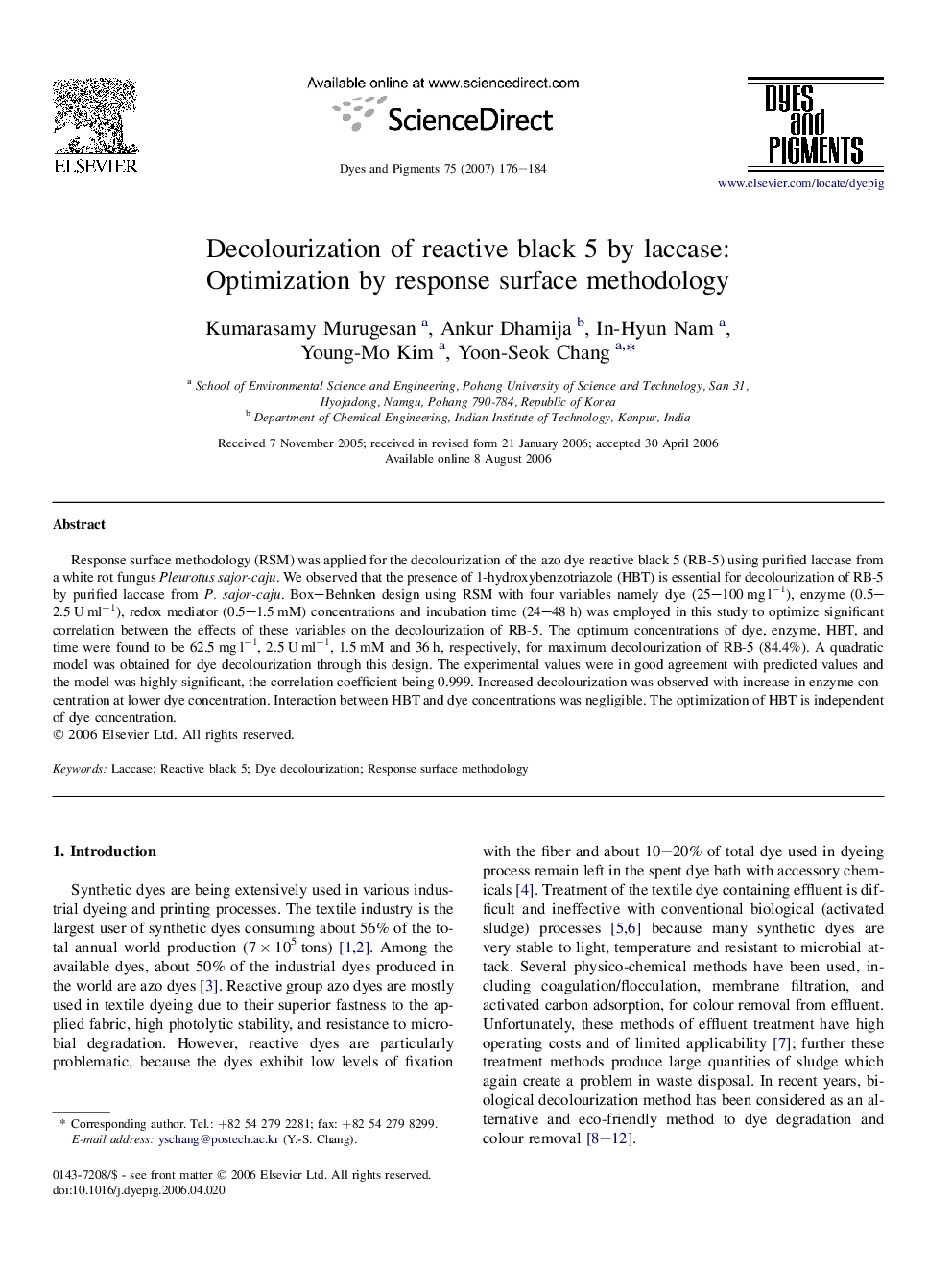| Article ID | Journal | Published Year | Pages | File Type |
|---|---|---|---|---|
| 177705 | Dyes and Pigments | 2007 | 9 Pages |
Response surface methodology (RSM) was applied for the decolourization of the azo dye reactive black 5 (RB-5) using purified laccase from a white rot fungus Pleurotus sajor-caju. We observed that the presence of 1-hydroxybenzotriazole (HBT) is essential for decolourization of RB-5 by purified laccase from P. sajor-caju. Box–Behnken design using RSM with four variables namely dye (25–100 mg l−1), enzyme (0.5–2.5 U ml−1), redox mediator (0.5–1.5 mM) concentrations and incubation time (24–48 h) was employed in this study to optimize significant correlation between the effects of these variables on the decolourization of RB-5. The optimum concentrations of dye, enzyme, HBT, and time were found to be 62.5 mg l−1, 2.5 U ml−1, 1.5 mM and 36 h, respectively, for maximum decolourization of RB-5 (84.4%). A quadratic model was obtained for dye decolourization through this design. The experimental values were in good agreement with predicted values and the model was highly significant, the correlation coefficient being 0.999. Increased decolourization was observed with increase in enzyme concentration at lower dye concentration. Interaction between HBT and dye concentrations was negligible. The optimization of HBT is independent of dye concentration.
